Amcrest vs Reolink — Comparison of PTZ Cameras

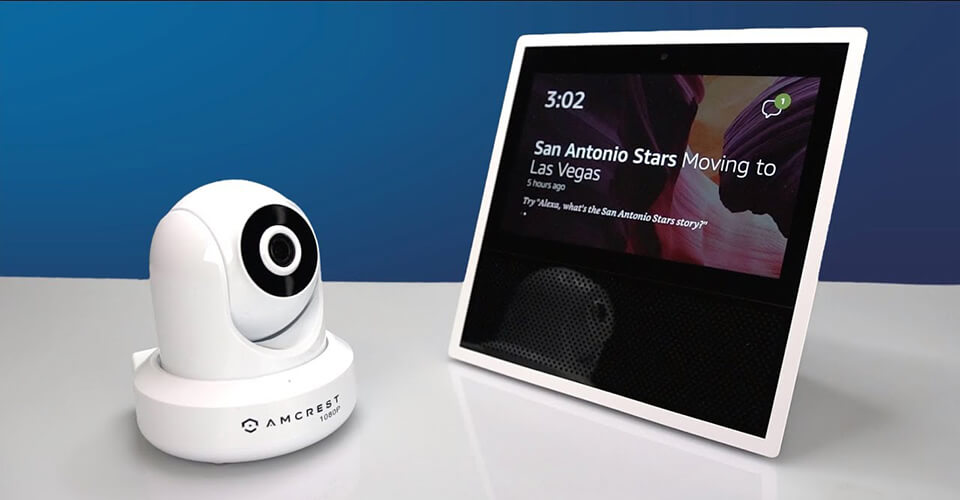
As regards the most efficient and effective PTZ camera for security purposes, Reolink and Amcrest products rank highly. Without a doubt, they are on the list of the most suitable cameras for outdoor use. Both camera brands have products with similar features. Hence, this Amcrest vs Reolink comparison is essential to tell which of the companies' PTZ cameras are the most suitable for different users.
One thing you can expect from the cameras is efficiency. Amcrest and Reolink surveillance units have impressive pan, tilt, and zoom features. You can rest assured that your house or property is safe if you use any of them.
This guide is for you if you are undecided about the cameras to purchase to keep your office or property safe. I tested various models of the Amcrest and Reolink products. Here, we discuss the features of the cameras and pick which is more outstanding.
Camera
Typically, Amcrest pan-tilt-zoom cameras capture in full 1080p resolution. This capability is standard in PTZs. With the superb quality of Amcrest's full HD, imagine how much better your film would be with a camera that has twice its resolution.
Several Reolink cameras feature a resolution that is four times that of Amcrest's 1080p cameras. The Reolink RLC-423 and the RLC-823A are 4K cameras with 8,294,400 pixels. This high resolution assures better video clarity and blows the competition away.
A security camera has to be able to see in the dark. Both the Reolink and the Amcrest cameras meet expectations in this respect. The Reolink E1 Zoom camera has a night vision range of 40 feet, while the Reolink Solar Panel Battery Camera has a night vision range of 33 feet. Amcrest cameras like the IP2M-841 and IP2M-841W produce 32 and 30 feet, respectively.
Amcrest and Reolink make cameras with excellent night vision. For example, the Reolink 423 and 823A have a night vision range of up to 190 feet. The Amcrest IP4M-1083EW-AI, at 492 feet, and the IP4M-1063EW-AI, at 328 feet, are much longer. You may be confident that the camera will uncover criminal activity regardless of your chosen model.
The zoom functions of Reolink and Amcrest cameras are comparable. Both are excellent, although the latter is superior in this regard. Most Reolink cameras only offer a 3X, 4X, or 5X optical zoom range. In contrast, IP4M-1083EW-AI has an incredible 32X optical zoom range. With these products, nothing is out of view.
Safe for Amcrest IP4M-1083EW-AI's optical zoom range, I would have opted for the Reolink due to their resolution. However, the optical zoom and night vision ranges of Amcrest cameras, particularly the IP4M-1083EW-AI and IP4M-1063EW-AI, make it my pick.
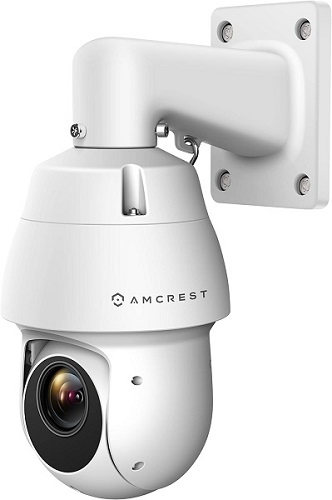
Video Output
Imagine watching a recording of an important event like a break-in, and the footage quality suddenly drops, making you miss a crucial part. People opt for surveillance units with excellent video output capabilities to avoid this inconvenience. This category of the Amcrest vs Reolink cameras comparison is tight due to their similarity.
Several new surveillance units use modern video output technology; the Reolink and Amcrest cameras are no exception. With the HEVC (H.265) video coding feature, you can rest assured of getting good video quality without breaks or loss.
The HEVC is an improvement of the AVC (H.264) and uses the CTUs to make video frame processing more efficient. The CTU format ensures reduced bandwidth and file size. However, this differs from the macroblocks H.264 uses to process the frames of your videos.
Also, while the CTU can process 64x64 block sizes, the macro book of H.264 can process 4x4 to 16x16 blocks. The H.264 (Advanced Video Codec) requires 32 Mbps for a 4K visual broadcast, while the H.265 requires 15mbps.
Where one edges the other in the Reolink vs. Amcrest comparison is duality. Amcrest IP4M-1083EW-AI incorporates the H.265 and the lower format, H.264. Amcrest IP2M-841's dual compression technology is an intelligent move by Amcrest since the H.265 AVC has its disadvantage— for video processing; it requires sophisticated hardware.
This category of camera comparison is tight. However, due to the IP4M-1083EW-AI dual video format, I would choose the Amcrest as the better camera over the Reolink.
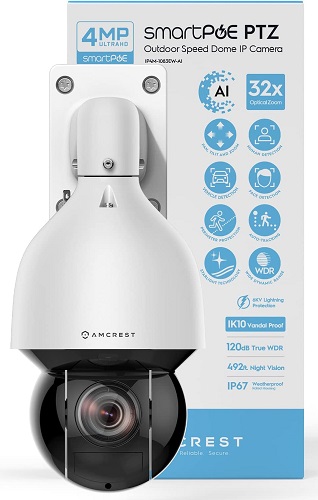
Image Sensor
The image sensor plays a pivotal role in a security camera. A camera's sensor is crucial for capturing events; as light passes through its lens, it detects and turns it into a signal. The most common image sensor for surveillance cameras is the Sony CMOS, with sizes ranging from 1/2.8, 1/ 2.7, and 1/ 3.
You should know that the sensor's size influences the picture quality. More light may be captured by a camera with a larger sensor, leading to improved picture quality.
There is no clear winner between Amcrest vs Reolink in this category. The usual size for Amcrest cameras is 1/2.7", whereas the Reolink products come at 1/2.8".
The Reolink camera has a higher resolution than the Amcrest cameras since its image sensor is larger. More photosites from a larger image sensor mean more megapixels, which means better resolution and picture quality.
While Reolink cameras have bigger sensor sizes, Amcrest uses the latest image sensor. Most Amcrest models use the Exmor IMX323 image sensor and the ambarella S2LM chipset. These new model image sensors ensure that the camera captures with low noise.
In this comparison of Reolink vs Amcrest, it is tough to choose a victor since one has modern sensors and the other has large sensors. Because of its compact design, the Reolink camera is my personal preference. The optimal size of the image sensor in the Reolink-823A enables superior low-light performance and high-quality, noise-free images.
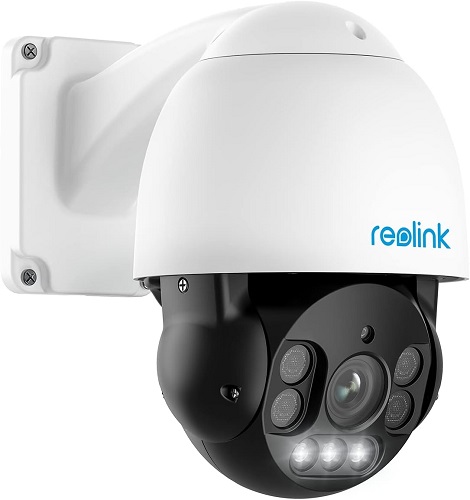
Lens
Amcrest and Reolink cameras have different lens designs. The lenses on each camera are unique in terms of type and size. Understanding and comparing their kinds and sizes and the effect they have on the cameras' overall image quality and performance will be necessary to choose a winner.
The Amcrest camera models have bigger lenses. For instance, the Amcrest IP4M-1083EW-AI has a lens of 0.19 to 6.14 inches (4.9mm to 120mm). However, Reolink camera models come with 0.11 to 0.47 inches (2.7mm to 12mm) lenses.
In camera, big lenses do not equate to the most suitable camera, so don't let the big size deceive you. For monitoring large areas like parking lots, building sites, etc., you need a broader field of view, and smaller lenses provide just that. For example, the field of vision for the smaller lens on the Reolink may reach over 90 degrees, whereas, for the larger lens on the Amcrest, it can range from 2.6 to 62.8 degrees. Amcrest cameras, however, because of their larger lenses, will allow you to see a greater distance with more details.
The optics of Amcrest and Reolink cameras are different. The former have fixed lenses, while the latter have varifocal lengths. The Reolink camera's varifocal lens makes it easier to zero in on the ideal viewing distance.
There are two main reasons why the Reolink camera is better in this category. For starters, their compact lenses are more suited for monitoring large areas. Secondly, they use more adaptable varifocal lenses. I recommend the Reolink RLC-423.
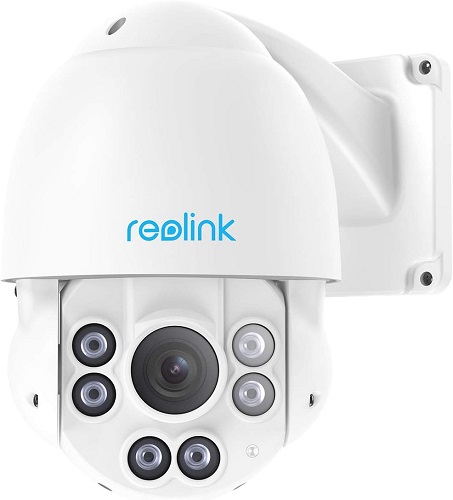
Motion Detection & Audio
Amcrest and Reolink cameras come with motion detection features. In security cameras, motion detection features detect anything that seems out of place. The built-in alarm of the surveillance units warns the owner and scares away intruders.
Motion detection and two-way audio are standard features of surveillance cameras. Therefore, the fact that Amcrest or Reolink cameras have this capability is not a big deal. The protection and comfort these features provide are invaluable to their owners.
Amcrest and Reolink models notify you of events and movements around your environment. Once you connect your camera to your mobile device, you will receive an alert instantly. For Amcrest cameras, you can create sensitive zones so you will receive only specific alerts.
The motion detection settings of the Reolink camera may be adjusted as needed. Similarly to Amcrest, this camera allows you to schedule detection, alter the sensitivity of the detection, and establish detection zones.
Depending on your configuration, you may communicate through the camera's app when you get a motion alert on your phone or in email or phone. The camera's microphone and speaker allow for hands-free conversation.
Several models of Reolink cameras, such as the Argus PT (Reolink Solar Panel Battery Camera) and the RLC-423, boast excellent motion detection and two-way audio. For this category, I will settle with the Amcrest brand.
Judging from my experience testing Reolink cameras, the company still has some work to do on its motion detection, particularly with the RLC-423. It is too sensitive and could be bothersome. For that reason, my preferred option is the Amcrest IP2M-841W.
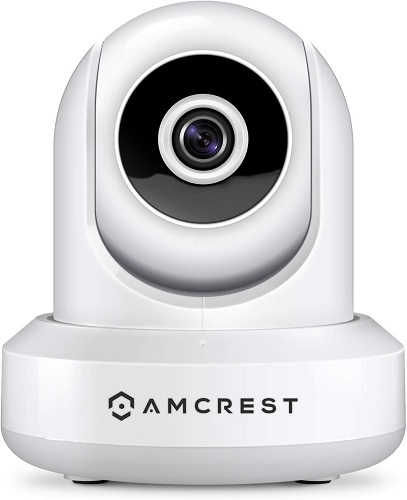
Connection
The Amcrest camera features an HTTP protocol and wireless WiFi connection. The camera has ARS/WPA2 encryption but does not support the 5G network.
A camera's HTTPS connection prevents unauthorized Intrusion in private communication. By encrypting information with an SSL Certificate, HTTPS protects you from hackers. Without the HTTPS protocol, hackers could get access to it or see the information passing through.
Unlike the Amcrest models, the Reolink Argus PT supports a 2G and 5G network. With only a single cable, you can provide data and power for the cameras since they are PoE ones.
Amcrest vs Reolink NVR both employ their proprietary NVR systems. The former uses Amcrest NVR, whereas the latter group utilizes Reolink NVR.
Amcrest cameras have a modest advantage over Reolink products due to their added security. However, the Reolink 5G network, particularly the Reolink E1 Zoom, makes it my pick as the best in this category.

Control
Cameras that can pan, tilt, and zoom are becoming easier to use, thanks to the efforts of the industry's leading manufacturers. Newer camera types, such as the Amcrest and the Reolink, make it simpler to use your camera. In particular, the Reolink camera's pan and tilt rotations may be adjusted or controlled across 355 degrees and 50 degrees, respectively.
The free Reolink app is available for Android, Apple iOS, macOS, and Windows, making control of your Reolink devices easier. Using the Reolink app, you can control the camera remotely and keep an eye on everything in your house.
The Reolink-423 supports Google's Voice Assistant. You can use Google Assistant with your Reolink camera. As a result, you can control the camera verbally to enable you to monitor any area of the house.
The Reolink camera is the best for keeping an eye on your kids. The live stream of your kids' play area or bedroom will be available with a simple command.
You can manage the Amcrest security cameras, like Reolink versions, from any iOS, Android, Windows, or Mac device. Installing the Amcrest app on any device will allow you to remotely control the camera's pan, tilt, and zoom features.
Alexa is integrated with Amcrest's pan, tilt, zoom, and functions via Amcrest Cloud. You can also manage the Amcrest cameras with voice commands. In contrast, the two cameras' command systems are entirely different.
The IP2M-841EW model gives the Amcrest model a slight edge over the Reolink model. Choosing the better of the two is difficult in this category, so the best choice comes from personal taste. Based on my research, the Alexa voice command technology is the best option for usage at home.
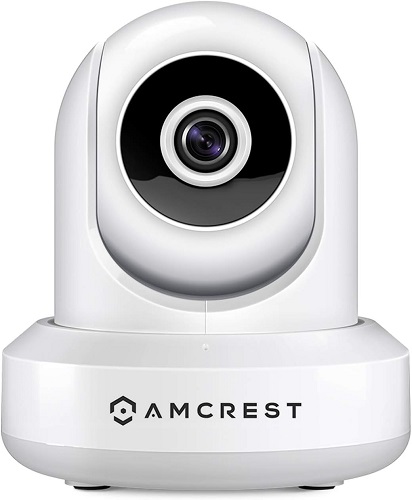
Setup
The Amcrest and Reolink cameras are simple to install. The Amcrest needs you to plug in the PoE Injector. You can power them either by an electrical connection or over a wireless network.
You don't need to be a techie for the cameras or hire one to set them up. Also, the cameras can be connected via NVR — facilitating software updates.
Except for Amcrest IP2M-841W and IP4M-1083EW, both of which weigh just 0.5 pounds, Amcrest cameras are heavier. Reolink's E1 Zoom and E1 Outdoor, and Argus PT are 0.55 lb. and 0.84 lb., and 1.03 lb. Either camera can be set up in less than five minutes.
In this category of the Amcrest vs Reolink, I prefer the Reolink camera due to its smaller size and easier installation. The Reolink camera, especially the E1 series, is the clear victor.
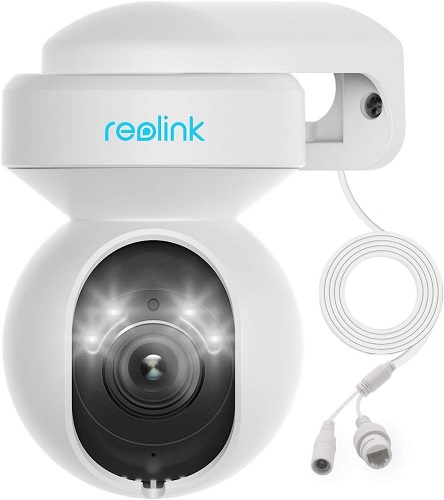
Reolink vs Amcrest: Conclusion
This comparison between Reolink vs Amcrest cameras is challenging, considering how good both manufacturers are. They have unique features that make them outstanding and among the best cameras today.
From the eight features I discussed, Amcrest and Reolink are tied. However, I would've chosen Reolink devices over the Amcrest due to their superior resolution.